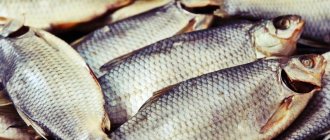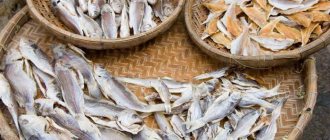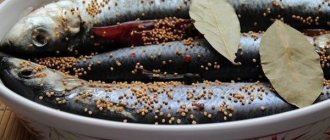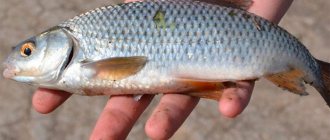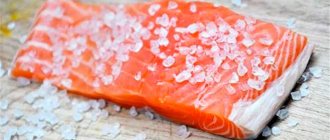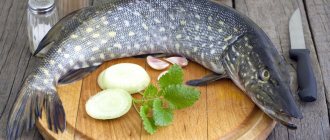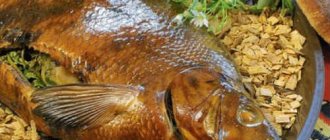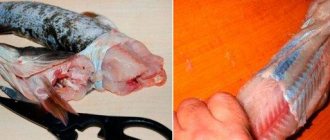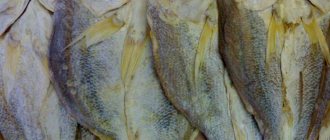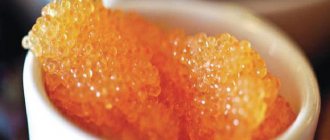Dried fish first appeared about 5,000 years ago. The preparation method of the product was used to extend the shelf life. Over time, dried fish became a valuable snack and trade item.
Today, such a product is served with foamy drinks and as an addition to cold cuts on the holiday table. Sea and river fish are used for drying, so the dishes have a variety of tastes.
Dried fish is prepared without preliminary heat treatment. It is dried at a temperature of 35 degrees. After cooking, the bulk of the beneficial compounds are retained in meat and caviar. The product is rich in omega-3 acids, minerals and vitamins. But this method of preparation can also be harmful.
The article describes the positive and negative aspects of the product, the features of its effect on pregnant women, children, people with pathologies, and the rules of choice. Also presented are the results of research by scientists related to the detection of diseases after eating dried carcasses.
Types of fish suitable for drying and drying
Sea and river fish species with high and medium fat content, weighing up to 700 g, are suitable for drying. Such carcasses are prepared whole. Large specimens are cut into pieces before drying.
Often used:
- perch;
- rudd;
- bream;
- ram;
- whiting;
- ruff;
- flounder;
- vobla;
- fisherman;
- asp;
- mullet;
- sprat;
- capelin;
- toothfish;
- mackerel;
- saberfish;
- smelt;
- roach.
Salmon and sturgeon are also dried, but only the abdominal and dorsal parts of the carcasses (teshi and balyki) are used.
Difference between dried and dried fish
Fish appetizer can be prepared in several ways: drying and drying. Regardless of the method of preparation, people call such fish dried. Different fish are suitable for drying and drying; moreover, these methods differ in the preparation. The differences are described in the table:
| Dried | Dried | |
| Salt | Fresh and salty | Only salty |
| Fat content | Low and medium fat content | Fat |
| Cooking method | Cold (natural, cool weather) or hot (oven) | Warm, natural method (in warm weather, in the shade, in a well-ventilated place). The fish is pre-salted. |
| Preparation time | 1.5-2 months (cold method) or 5-6 hours, fast (hot method) | 2-3 weeks or a little more - depending on the weather |
The resulting dried fish is softer, moister, and more transparent. Prolonged drying makes the fish hard, dry and salty. Accordingly, it is preferable to choose fatty fish for drying, and vice versa for drying. The same type of fish can be prepared in different ways, it all depends on the person’s personal preferences.
Beneficial features
To be saturated with vitamins, macro and microelements without harm to the body, a healthy person just needs to eat 100–150 g of dried fish 2 times a week. In old age, the norm should be reduced to 80–100 g once a week.
What are the benefits of dried fish:
- Slows down the aging of the body.
- Accelerates tissue and cell regeneration.
- Prevents the formation of depression, improves mood.
- Stimulates brain function.
- Strengthens bones, teeth, nails.
- Promotes normal hair growth.
- Prevents the formation of sclerotic plaques.
- Reduces the risk of anemia.
Features of the impact on women and men
The benefits of dried fish for women are associated with improved skin and hair condition. The use of the product helps prevent the formation of wrinkles and reduce the likelihood of destruction of hair follicles.
Fish also contributes to:
- Reducing nervous tension before menstruation.
- Preventing the development of osteoporosis during menopause.
- Normalization of hormonal levels.
This fish also has a healing effect on men:
- the product is rich in protein, which is necessary for muscle formation and restoration of strength after hard physical work;
- fish provides the male body with minerals and vitamins that support and improve potency;
- dried snack helps improve blood flow and prevent the development of prostatitis.
Differences between dried and dried fish, which is healthier
Dried and dried fish differ in the method of preparation and the type of raw materials used. For the first type, low-fat or lean varieties are chosen, for the second - fatty and medium-fat.
Other features:
- For drying, carcasses are first salted for 2–3 hours to several days. Dried fish can be cooked without prior salting.
- Dry the product outdoors or in a ventilated area. For the second cooking method, it is permissible to use an oven.
- The duration of drying, depending on the size of the fish, is 2–4 weeks. The drying process takes 1.5 months.
Due to the specifics of processing, products have different hardness and color of meat. Dried fish is soft, the fillet may have a reddish or pink color with bloody spots. Dried specimens are hard and brown, yellow or dark red inside.
Medicinal properties depend on the type of carcasses used. Jerky contains more omega-3 acids because these snacks are made from fatty fish. But there are benefits to dried fish too. The reason is that during cooking, carcasses are not exposed to prolonged high temperatures. They retain the beneficial substances found in the raw product.
Contraindications, possible harm
Cons of dried fish:
- The product contains a large amount of salt.
- The lack of heat treatment increases the risk of human infection with parasites when eating low-quality carcasses.
Contraindications for use:
- Hypertension. Salt can cause fluid retention in the body, which leads to increased blood pressure.
- Tendency to swelling.
- Pathologies of the kidneys and urinary system.
- Metabolic disease.
- Severe liver damage.
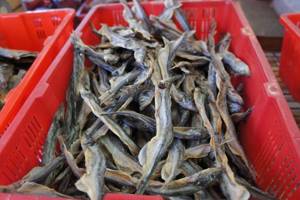
Fish also becomes dangerous if it deviates from the rules of preparation, transportation and storage.
An overdose of this product causes the accumulation of salt in the tissues, which leads to the formation of edema, increased blood pressure, disruption of metabolism and the functioning of the urinary system.
Cause of botulism, research
When studying the reasons for the development of botulism in residents of different regions of Russia, experts found that most cases are associated with the consumption of low-quality fish. Thus, a study of morbidity in the Trans-Baikal Territory from 1998 to 2012 showed:
- 76.9% of people became infected from carcasses prepared in non-industrial conditions;
- 80% of cases were caused by low-quality salted and smoked omul, 15% by cold-smoked herring, 5% by dried carp;
- about 77% of contaminated fish were purchased in places unsuitable for food products.
The full text of the study is presented in the electronic scientific library.

On this resource you can also find works on the Belgorod region and Volgograd. When studying the causes of botulism in the first region, it was found that all cases of the disease in 2014 were caused by eating fish made at home.
Epidemiological work in Volgograd revealed that 79% of infections occurred due to dried product made in artisanal conditions. At the same time, the fish was sold both in markets and in stores.
Risk of infection with opisthorchiasis, research
In 2012, scientists from the Tomsk region published the results of their work on the causes of infection with parasites - opisthorchiasis. It was revealed that most of the cases arose as a result of the consumption of carcasses caught by amateur fishermen in the Ob, Tom and their tributaries. The most common cyprinids that are infected are ide and roach. The content of pathogens in the population is from 50 to 100%.
However, opisthorchiasis can also be obtained from other fish that live in the same body of water as carriers of parasites.
Experts have named the main causes of human illness:
- consumption of fish that has undergone poor heat treatment - 38.3%;
- inclusion of dried carcasses in the diet - 26.6%;
- presence of lightly salted fish in the diet - 17.7%.
Proper storage of dried fish
Dried fish can often be stored for quite a long time. In order to ensure the safety of fish for a long time, you need to know how to properly store dried fish at home.
The most favorable conditions for storage:
- cool and dry place;
- metal or glass container;
- cooling chamber.
For each type of fish, it is imperative to choose a suitable storage method in order to preserve the taste of the product.
It is best to store bream in a wooden container, and the fish should be wrapped in paper.
Freezing is best for roach and ram. Before use, you need to defrost the fish by first wrapping it in paper that can absorb excess moisture.
Smelt is the kind of fish that is best stored in paper, greased with oil. Storage is carried out in a wooden box.
It is important to know: at room temperature, and also at high humidity in the room, dried fish can be stored for no more than 2 months!
Pregnant and lactating
High-quality dried fish is useful during pregnancy.
Product advantages:
- saturates the woman’s body with essential vitamins and minerals;
- reduces the risk of developing fetal pathologies;
- prevents premature birth and low birth weight babies;
- reduces the likelihood of developing depression.
When carrying a child, you are allowed to eat 100 g of dried fish 1-2 times a week. It is necessary to choose carcasses of medium fat content: high-calorie foods can put a high load on the stomach, cause heartburn and indigestion.
During breastfeeding, dried product is prohibited. Due to its high salt content, it can worsen lactation, and when saturated with the mineral, the milk itself becomes dangerous for the newborn. It can lead to deterioration in the baby’s kidney function, metabolic disorders, and colic.
Safe production
Fish processing plants know how to deal with helminth larvae in fish. During the process of drying and drying, the fish undergoes strict sanitary control; it is frozen, which leads to the complete death of parasites. The freezing technique is very simple: the lower the temperature, the less time is needed. For example, at −27 °C the processing time is 12 hours, and at −8 °C it is already 7 days. Therefore, it is especially dangerous to eat smoked, dried or salted fish prepared in artisanal conditions. In these cases, as a rule, the destruction of parasites does not occur due to non-compliance with technology. Today, buying industrial packaging for dried fish is not a problem, only this can be a guarantee of safety.
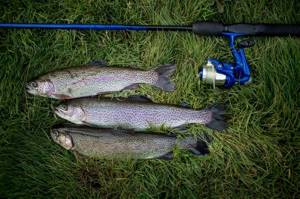
Fish with a worm. How to avoid picking up dangerous parasites along with your catch? More details
Is it possible for children
Doctors do not recommend giving dried fish to children. At an early age, the product is dangerous due to the possible content of parasites. The younger the child, the more severely he suffers from helminth infection.
It can be introduced into children's diets from the age of 6 years. At this age, the body is able to cope with the processing of large amounts of salt and fat contained in dried carcasses.
A child can eat 50 g of fish once a week. From 14 years of age the norm is 100 g per 7 days.
You cannot increase the portion: an overdose of salt and vitamins may occur. In this case, side effects are observed:
- swelling;
- disruption of the gastrointestinal tract;
- irritability;
- drowsiness;
- nausea;
- diarrhea or constipation.
Recommendations from nutritionists for losing weight
The advice of nutritionists regarding the use of dried product when losing weight differs. Some experts believe that small amounts of fish are beneficial. No additional fats are used in its production, and the healing substances are preserved. The product is quickly and easily digestible and satisfies hunger well.
Other experts recommend that overweight people avoid dried meats, as it promotes fluid retention in the body. But there is no complete ban on use. If a person is not diagnosed with obesity, fish can be eaten once a week in the morning.

Chemical composition, calorie content
The exact chemical composition depends on the type of fish. For example, sea varieties are better saturated with iodine and omega-3 fatty acids.
All types of product contain the following substances:
- proteins;
- amino acids;
- omega-3 and omega-6 fatty acids;
- iron;
- calcium;
- magnesium;
- potassium;
- selenium;
- phosphorus;
- fluorine.
Dried fish is rich in vitamins A, E, D, group B. The calorie content of the product also depends on its type. Examples of nutritional energy values are given in the table.
| Fish name | Calorie content, dried (kcal per 100 g) | Calorie content, dried (kcal per 100 g) |
| Perch | 130 | 82 |
| Omul | 215 | — |
| Rudd | 100 | 134 |
| Bream | 218 | 221 |
| Flounder | 132 | 173 |
| Taran | 88 | 149 |
| Blue whiting | 249 | 265 |
| Ruff | 174 | — |
| Vobla | 235 | 187 |
| Asp | 136 | — |
| Rybets | 88 | — |
| Tulka | 190 | — |
| Chekhon | 113 | 235 |
| Smelt | 148 | 361 |
| Roach | 150 | 141 |
| Mackerel | 305 | — |
| Pink salmon | 174 | — |
| Sturgeon balyk | 88 | — |
Benefits and harms in diseases
Dried fish is not included in the list of products for therapeutic diets. Boiled, stewed and baked carcasses are used for maintenance therapy. For some diseases, salted specimens are dangerous, but there are pathologies when the dried product is useful for supporting physical strength. In this case, you must comply with the daily allowance limits. Examples:
- Diabetes. Dried fish does not cause an increase in blood sugar levels, but on the contrary, stimulates the reduction and prevents the accumulation of cholesterol. But due to the high salt content, you can consume the product 1-2 times a week, 100 g.
- Pancreatitis. If you are sick, you should avoid dried and sun-dried fish: it can cause swelling of the pancreas and stimulate the development of tissue necrosis of the diseased organ. To saturate yourself with fatty fish acids, it is better to take capsules that are sold in pharmacies.
- Gastritis. The product is also prohibited: the salt it contains can irritate the gastric mucosa. It can be introduced into the diet only if there is stable remission, having previously discussed it with your doctor.
- Gout. Dried fish is contraindicated. It can stimulate the deposition of uric acid in body tissues.
- Senile dementia and Alzheimer's disease. For this pathology, the product is useful when consumed in moderation. Fish contains vitamins, fatty acids and minerals that can stimulate brain function and prevent the destruction of nerve cells.
- Prevention of cardiovascular diseases (stroke, heart attack). The dried product can prevent the development of pathologies, since it saturates the body with omega-3 acids, potassium, magnesium, and protein. However, fish is allowed 2 times a week, 100–150 g. A large amount of salty product can stimulate an increase in blood pressure.
- Prevention of oncology. This is due to the presence of fatty acids and antioxidants in carcasses. But for the prevention of cancer, foods with an alkalizing effect, such as fresh vegetables, are more beneficial.
- Preventing anemia. Regular addition of dried fish to your diet helps improve blood flow and increase iron levels in the body. To do this, it is enough to use the product 1-2 times a week.
Harm of dried fish
Despite the wide range of benefits of this unique product, in some cases this delicacy can cause harm.
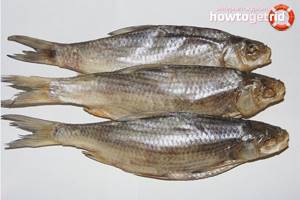
- You need to be especially careful when choosing where to buy dried and, especially, dried products. By purchasing it in an unfamiliar place, there is a high probability of becoming infected with diphyllobothriasis or other parasites, E. coli. That is why you should only purchase fish that is produced at the factory, because in this case it goes through all the required stages of processing. Important! Freshwater fish are especially dangerous in this regard. If the product is prepared by drying and smoking, then you cannot be completely sure that the parasites have been dealt with. This product is best boiled or fried.
- Eating dried fish in large quantities is contraindicated for patients suffering from heart and kidney diseases.
- This unusual delicacy is very tough on our stomach. In this regard, irritation of the gastric walls and, as a result, disruptions in the functioning of the gastrointestinal tract may occur.
- Bones, which can be very difficult to separate from meat, can be a choking hazard.
- Dried fish is harmful for hypotensive people, since the increased salt content can provoke an outflow of fluid from the blood, and therefore the situation with blood pressure will only worsen.
It is important to know where the fish were caught. If the catch was made in heavily polluted water bodies, then it is not surprising to become poisoned by such a product.
benefits and harms of black caviar
In what form is it sold, how to choose
Dried fish differs in the type of pre-processing and pre-sale preparation. You can buy the following products:
- Entirely. There are cut specimens with all the insides.
- Beer snacks. Such fish is pre-cut, scaled and sliced. The product resembles a thick straw, but other shapes may be available.
- Tesha. These are cut strips from the belly of salmon and sturgeon. It can be with skin and scales or peeled.
- Balyk. Prepared from large fish. The dorsal part of the carcass is used for it.
The product can be sold by weight or in individual vacuum packaging. When purchasing the second option, you need to pay attention to the expiration dates indicated by the manufacturer, as well as the contents in the package. High-quality carcasses should not look wet; a small amount of moisture and fat is allowed in the packaging.
If the fish is heavy, you must:
- Smell the product. When the smell is felt, it is better to refuse the purchase. The appearance of an odor is a sign of rotting meat. A good fish has the aroma of the sea.
- Examine the surface. An unpeeled carcass should be completely covered with scales and have no yellow streaks.
- Press down on the fish. A good fillet is firm but not hard.
According to GOST, the shelf life of dried products depends on the type of raw materials used in production:
- fish with a fat content of more than 10% remains of high quality at temperatures from 0 to -8 60 days;
- a product with a fat content of less than 10% is stored for up to 4 months at a temperature of 0 to -8 degrees.
In a cool room, fish does not spoil for 30–60 days.
The benefits and harms of dried caviar
Dried caviar can only be found in eggs. The product is not separated from the film before cooking, as small elements will begin to crumble and lose moisture faster and dry out.
- tarama - from bream, roach and other carp;
- galagan - from perch, pike perch;
- bottarga - from mullet or tuna.
The product is full of useful substances because it is not subjected to hot processing. Caviar has less calories than meat, and the concentration of micro and macroelements in it is higher.
50 g of delicacy is allowed per day.
If the dosage is observed, the product helps prevent anemia, atherosclerosis, and improve immunity. But if abused, caviar can be harmful because it contains salt. Also, the product may contain helminths, so you need to purchase the product only at points where they provide documents confirming its quality.
Types of dried fish
To better understand the beauty and variety of tastes, it’s worth learning a little more about “fish and beer”:
- Dried roach is the most famous and best-selling type of inexpensive but tasty salted and dried fish, which most Russians are familiar with. It is widely represented in most retail outlets and pubs. Dried roach is rarely eaten as a separate product - it is a classic beer snack!
- Dried roach may well compete in popularity with roach. This is an inexpensive fish, the taste of which is worthy of all praise. Roach is produced by many companies, most of which have their own secrets of unsurpassed taste!
- Dried sabrefish is an excellent snack option for foamy beer. The meat of this fish and its origin is bony, but the taste and unique aroma still make this fish one of the most popular beer snacks on the market. In addition, chekhon is quite often used as an independent dish.
- Dried bream is the best beer snack of all time! The fatty, fibrous meat of this fish has a special taste. Many connoisseurs and connoisseurs of “beer with fish” believe that it is bream, and only it, that is capable of maximizing the taste of any type of beer!
Dried pike and dried perch occupy a special place among the popular types of fish snacks. These are real delicacies that you don’t see on the shelves very often. However, it’s worth trying them, because no fish has such a tart and rich aroma as pike! And the fibrous, slightly sweetish meat of perch is simply unforgettable in taste!
